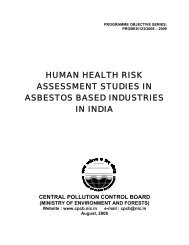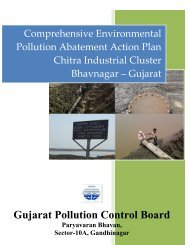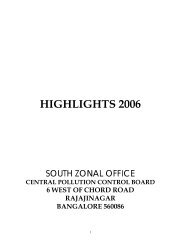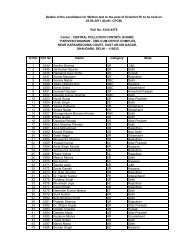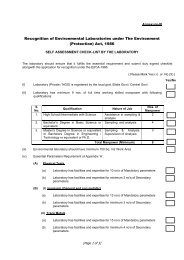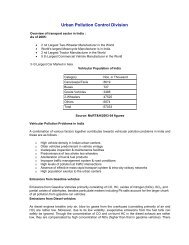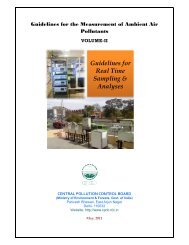Q ST QUA TAT ALIT US O TY IN OF W N IN WA NDIA ATER A- 2 R ...
Q ST QUA TAT ALIT US O TY IN OF W N IN WA NDIA ATER A- 2 R ...
Q ST QUA TAT ALIT US O TY IN OF W N IN WA NDIA ATER A- 2 R ...
Create successful ePaper yourself
Turn your PDF publications into a flip-book with our unique Google optimized e-Paper software.
Population Stress and water insecurityIndia's population is around 1.21 billion as on 1st March, 2011. The population of India isexpected to stabilize at around 1,640 million by the year 2050. As a result, gross per capita wateravailability will decline from 1,820 m 3 / yr in 2001 to as low as 1,140 m 3 /yr in 2050. Total waterrequirement of the country for various activities around the year 2050 has been estimated to be1,450 km 3 /yr. This is significantly more than the current estimate of utilizable water resourcepotential (1,122 km 3 /yr) through conventional development strategies. Therefore, whencompared with the availability of approximately 500 km 3 /yr at present, the water availabilityaround 2050 needs to be almost trebled. Various options have been considered, in quantitativeterms, as possible sources to augment the anticipated deficit. It is argued that due toconsiderations of gestation period and capital requirements, rainwater harvesting and waterconservationmeasures must receive the highest priority, followed by renovation and recycling tobe followed by intra-basin and then inter-basin transfers in the last phase. But, investigations andplanning processes for all options must begin immediately.The environmental challenges of water resources development and management in India areexpected to manifest themselves more explicitly and rapidly in the coming years. Theseenvironmental challenges may be addressed through four broad approaches:Improving efficiencies and minimizing losses, Recharging groundwater aquifers, Abatement andtreatment of pollution, Reuse and recycling of wastewater, Due to the complexity and urgency ofthe environmental challenges, these approaches need to be simultaneously pursued. However, itis evident that an essential prerequisite for water and human security is ecological security.Hence, water resource planning in India has to urgently estimate the requirements of water forecosystem security. In each of these approaches, appropriate policy, institutional, technologicaland economic interventions and instruments may be adopted. Most of these instruments havefortunately been tried or tested at least on a pilot scale in India. The challenge is toinstitutionalize systems for these interventions and instruments to work on a large scale.1.5 Water Needs of EcosystemThe water needs of ecosystems are not always recognized, since many people do not regardwater for eco-systems as a social and economic use. Yet, access to fresh water is an indisputableneed for the maintenance and functioning of valuable ecosystems and landscapes in whichhuman activities are an integral part. Ecosystems are also important in securing human health,because they provide services that are fundamental to our life support systems – such as pestcontrol and detoxification and decomposition of waste. They contribute to the production of food(crops and fish), medicines and other goods. They provide water treatment, recreation andwaterway transport. Also, terrestrial ecosystems help balance rainwater infiltration, ground waterrecharge and river flow regimes.5



